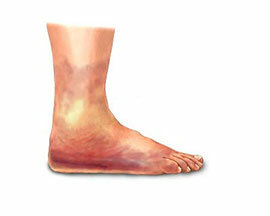
The vast majority of people have experienced conjunctivitis at least once in their lives. Swelling of the eyelids, redness of the eyes, pain and pain, itching, purulent discharge are typical symptoms of conjunctival inflammation. - the mucous membrane lining the inner surface of the eyelids and enveloping the anterior surface of the eyeball. Such manifestations interfere with normal work, disrupt vacation plans, and can lead to the cancellation of a long-awaited meeting or trip.
The cause of conjunctivitis is pathogenic bacteria that have trapped on the surface of the conjunctiva. A certain number of them are constantly present there and in perfectly healthy people, since the air with which they come in contact human eyes, by definition, cannot be sterile; they contain, albeit in small quantities, dust and bacteria. But the tear fluid, containing antibacterial components, destroys pathogenic microbes, maintaining the normal balance of the microflora of the eye.
Under a number of circumstances, the protective mechanisms of the conjunctiva fail. This can occur when the resources of the immune system are depleted, stress, some diseases of the respiratory system, hypothermia. In addition, in cases where a large number of pathogenic bacteria immediately enter the surface of the eye - for example, from dirty hands, when using expired cosmetics or violation of hygienic standards for the use of contact lenses, the protective capabilities of tears are not enough - develops conjunctivitis.
It is impossible to hope that the disease will go away on its own: the only truly effective the method of treatment is antibacterial therapy aimed at eliminating bacteria-pathogens diseases. Such treatment will help not only eliminate the painful symptoms of conjunctivitis, but also prevent the transition pathology in a chronic form or the development of complications, among which the most common pathologies are keratitis, blepharitis and ulcers cornea. Moreover, the earlier the treatment is started, the faster the symptoms of the disease will be eliminated. The antibiotic ofloxacin has proven itself well as the basis of antibacterial therapy. It has an antimicrobial effect directed directly against microorganisms, provoking inflammation of the conjunctiva, blocking their reproduction, due to which the manifestations of conjunctivitis subside quickly. Ofloxacin is highly active against most gram-positive and gram-negative microorganisms, causative agents of inflammatory and infectious eye diseases, including it is used to treat inflammation in the conjunctiva (conjunctivitis) and in the hair follicles of the eyelashes (barley). Drugs for the treatment of eye infections are available in various dosage forms - ointment and drops.
When using the drug, you need to remember that, no matter how quickly the symptoms of conjunctivitis are eliminated, the treatment course should last at least 7 days. Only then can you be sure that the bacteria-causative agents of the disease are eliminated and there will be no relapse.
In addition, contact lenses should be discarded during the course of treatment.
In addition to the sufficient duration of the course of treatment for conjunctivitis, in order to prevent relapses, it is important to carefully observe hygiene standards: do not touch your eyes with dirty hands, wash only with running water, use only your own cosmetics and rinse regularly, and treat with antibacterial compositions eye shadow brushes and a brush for carcasses. It is important to lead a healthy lifestyle, eat well, sleep well, and take other measures to strengthen the immune system. And if preventive measures were not enough and the disease nevertheless developed, it is necessary immediately, from the very first symptoms, start treatment and carry it out for as long as prescribed in the instructions or by the attending physician. This is the only way to avoid complications and the transition of the disease to the chronic stage.



